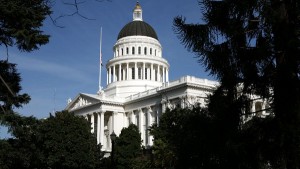It’s certainly easier to reach an agreement when you’re negotiating how to spend extra money rather than where to cut funding. A full five days before the June 15 deadline for passing a state budget, Gov. Jerry Brown, Assembly Speaker John Perez and Senate President Pro Tem Darrell Steinberg reached agreement Monday on a $96 billion spending plan. Hours later, a joint conference committee had the budget approved.

The budget provides several victories for Brown. Legislative leaders had been pushing to spend an additional $2 billion, but ultimately opted for the governor’s more conservative spending number. The budget also includes Brown’s top priority, albeit a slightly tweaked version of the plan: California will direct additional money to school districts where more than half of students are either poor or learning English.
Every leader involved in negotiations got part – but not all – of their budget priorities. Perez had been pushing to fund scholarships for middle-class students attending California colleges. The scholarship program is part of the budget, but it will be phased in over several years. And Steinberg had lobbied to restore dental coverage in the Medi-Cal program. The budget spends a third less on those benefits than Steinberg wanted, and a partial restoration of the cuts will not be implemented until May 2014. “Even though all budget negotiations are complex and difficult, I’d take this one eight days a week,” said Steinberg after his final meeting with Brown and Perez.
But that old saying about compromises – that they leave everybody a little unhappy – was on display when the conference committee voted on the budget deal’s various aspects. “It’s not everything that we hoped for, but it is a compromise indeed,” said committee chair Mark Leno. The San Francisco senator and other Democrats had wanted an additional $100 million for California’s court system, but settled for $63 million. “It’s certainly better than nothing,” state Sen. Loni Hancock said about the court compromise. “Anything always is.”
As KQED's Mina Kim reported on Monday, the budget will give mental health programs a boost of about $140 million in one-time funds.